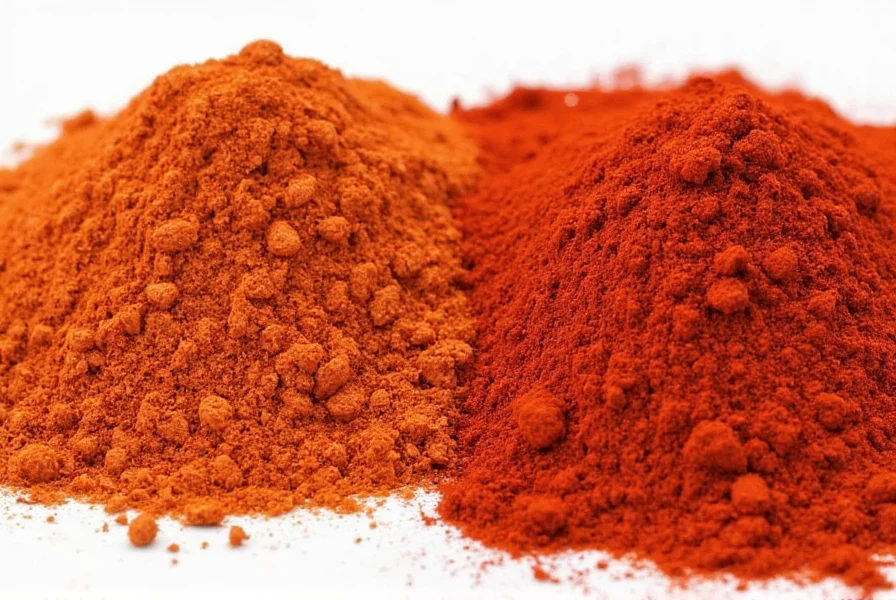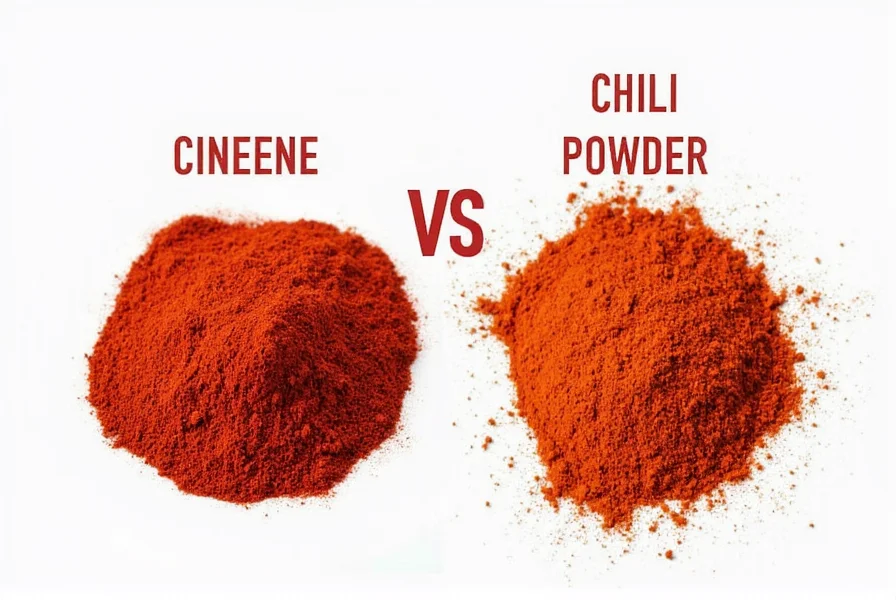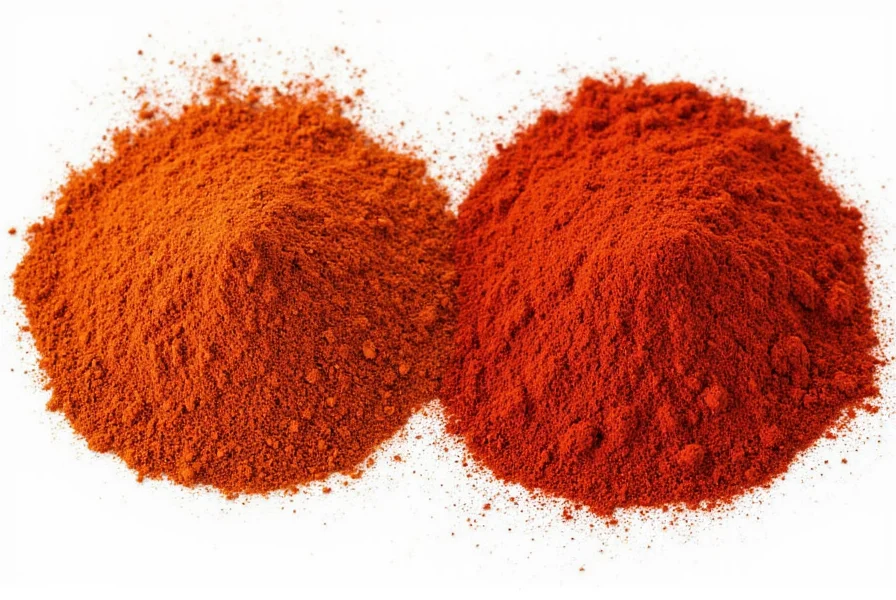Many home cooks mistakenly treat cayenne pepper and chili powder as interchangeable ingredients, but they have distinct characteristics that significantly impact dishes. Let's explore the key differences between these commonly confused spices to help you make informed choices in your kitchen.
Composition and Ingredients
Cayenne pepper consists solely of dried, ground cayenne peppers, typically measuring 30,000-50,000 Scoville Heat Units (SHU). This pure form delivers consistent, straightforward heat with subtle fruity notes.
Chili powder, despite its name, varies significantly by brand and region. Most commercial chili powders contain a blend of ground chilies (which may include cayenne, ancho, or other varieties) along with complementary spices. A typical chili powder blend might include:
- Ground dried chilies (ancho, cayenne, or others)
- Ground cumin
- Garlic powder
- Onion powder
- Oregano
- Salt (in some blends)
| Characteristic | Cayenne Pepper | Chili Powder |
|---|---|---|
| Primary Ingredients | 100% ground cayenne peppers | Blend of ground chilies + spices |
| Heat Level (SHU) | 30,000-50,000 | Varies (500-5,000) |
| Flavor Profile | Sharp, direct heat with subtle fruitiness | Complex, earthy, with multiple spice notes |
| Common Uses | Adding pure heat to dishes | Creating foundational flavors in Tex-Mex cuisine |
| Substitution Ratio | 1/4 tsp cayenne = 1 tbsp chili powder | 4 tbsp chili powder = 1 tsp cayenne |
Heat Level Comparison
One of the most critical differences between cayenne pepper and chili powder lies in their heat intensity. When considering is cayenne stronger than chili powder, the answer is almost always yes.
Cayenne pepper delivers a clean, immediate heat that registers between 30,000-50,000 SHU on the Scoville scale. In contrast, most chili powder blends range from mild to medium heat (500-5,000 SHU) because they're formulated to provide flavor complexity rather than pure heat.
This heat difference explains why substituting one for the other without adjustment often leads to disappointing or overwhelming results. Understanding what's the difference between cayenne and chili powder in terms of heat can prevent culinary disasters.

Flavor Profiles and Culinary Applications
While both spices contribute to the heat of a dish, their flavor contributions differ significantly. Cayenne pepper offers a straightforward, sharp heat with minimal additional flavor notes. It's ideal when you want pure heat without altering the fundamental flavor profile of your dish.
Chili powder provides a more complex flavor experience. The blend of spices creates a rounded, earthy foundation that's essential for authentic Tex-Mex and Southwestern dishes. This is why recipes specifically calling for chili powder shouldn't be substituted with cayenne alone.
When determining can I substitute cayenne for chili powder, consider the recipe's requirements. For dishes where heat is the primary goal (like hot sauces or spice rubs), cayenne works well. For dishes relying on the complex flavor base (like chili con carne or enchilada sauce), chili powder is irreplaceable.
Regional Variations and Labeling Confusion
The confusion between these spices is partly due to regional naming differences. In the United Kingdom and some Commonwealth countries, "cayenne pepper" often refers to what Americans call "chili powder." Meanwhile, what Americans call "cayenne" is frequently labeled as "red pepper" in British grocery stores.
Additionally, some specialty chili powders (like ancho chili powder) contain only one type of ground chili, further complicating the terminology. This labeling inconsistency contributes to the common question is cayenne pepper same as chili powder among international cooks.
Substitution Guidelines
If you find yourself without one spice and need to use the other, follow these guidelines for the best results:
- Substituting cayenne for chili powder: Use 1/4 teaspoon cayenne for every tablespoon of chili powder required. Add additional spices (1/4 tsp cumin, 1/8 tsp garlic powder) to approximate the flavor complexity.
- Substituting chili powder for cayenne: Use 1 tablespoon chili powder for every 1/4 teaspoon cayenne required. Be aware this will introduce additional flavors that may alter your dish.
For recipes where heat is critical (like hot sauces or spicy marinades), cayenne is preferable. For dishes where flavor complexity matters most (like chili or taco seasoning), chili powder works better. Knowing the difference between cayenne pepper and chili powder helps you make these judgment calls confidently.

Storage and Shelf Life
Both spices should be stored in airtight containers away from heat and light. Ground spices generally maintain peak flavor for 6-12 months. To test freshness, rub a small amount between your fingers and smell it. Fresh spices will have a strong, vibrant aroma, while stale spices will smell dull or musty.
Cayenne pepper tends to retain its heat longer than its flavor, while chili powder's complex flavor profile degrades more noticeably over time due to its multiple spice components.
Common Misconceptions
Several myths persist about these spices:
- Myth: All chili powders contain cayenne pepper.
Fact: Many chili powder blends use milder chilies like ancho as the base. - Myth: Cayenne pepper and red pepper flakes are the same.
Fact: Red pepper flakes contain seeds and membrane, making them hotter and more textured. - Myth: The terms are used interchangeably worldwide.
Fact: Terminology varies significantly by country and region.
Frequently Asked Questions
Can I use cayenne pepper instead of chili powder in chili recipe?
Yes, but with caution. Substitute 1/4 teaspoon cayenne for each tablespoon of chili powder, and add complementary spices like cumin and garlic powder to replicate the complex flavor profile. Using straight cayenne will make your chili much hotter with less depth of flavor.
Which is hotter: cayenne pepper or chili powder?
Cayenne pepper is significantly hotter than most chili powder blends. Pure cayenne measures 30,000-50,000 Scoville Heat Units, while typical chili powder ranges from 500-5,000 SHU. The heat difference explains why substituting one for the other without adjustment often leads to overly spicy or bland results.
What's the main difference between cayenne and chili powder?
The main difference is composition: cayenne pepper is made from a single ingredient (ground cayenne peppers), while chili powder is a blend of ground chilies and other spices like cumin, garlic, and oregano. This fundamental difference affects heat level, flavor profile, and appropriate culinary uses.
Can I make my own chili powder using cayenne pepper?
Yes, you can create a basic chili powder substitute by combining 2 tablespoons paprika, 1 teaspoon cayenne pepper, 1 teaspoon cumin, 1/2 teaspoon garlic powder, and 1/2 teaspoon oregano. This blend approximates commercial chili powder's flavor profile while allowing you to control the heat level.











 浙公网安备
33010002000092号
浙公网安备
33010002000092号 浙B2-20120091-4
浙B2-20120091-4